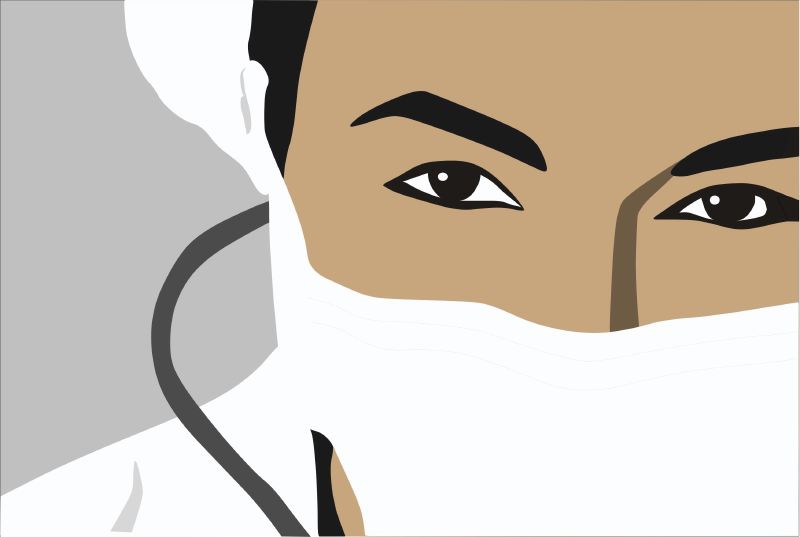
TRIGGER WARNING. This blog post talks about physician suicide and may be triggering for some people. If you are at risk of self-harm, please note that Physicians Anonymous is not an emergency service. Please call 911 or your local emergency service.
Nearly 300 US doctors a year die by suicide. National tragedy does not even begin to describe it.
It ain’t pretty, but we need to talk about it.
Nearly 300 US physicians die by suicide every year. National tragedy does not begin to describe it. The agony experienced not just by the victims but their loved ones, colleagues, and patients doesn’t bear thinking about.
But, like an exploratory laparotomy on a septic patient with a rigid abdomen, we need to look inside.
The numbers make for difficult reading.
One million Americans lose their doctors to suicide each year.
One doctor commits suicide in the U.S. every day — the highest suicide rate of any profession. And the number of doctor suicides — 28 to 40 per 100,000 — is more than twice that of the general population, new research shows. The rate in the general population is 12.3 per 100,000.
Of people who die by suicide, 85 to 90% have been living with a mental illness. This applies to physicians as well, but in one qualitative interview study of families whose physician family member died by suicide, approximately 10 to 15% of the decedents received no treatment at all.
Medscape’s 2021 report “Death by 1,000 cuts” revealed that one in 5 of us reported clinical depression, and more than two-thirds (69%) said they felt down (‘colloquial depression’) during 2020. Of those reporting depression, 13% said they experienced suicidal thoughts, and 1% attempted suicide.
A 2019 systematic review and meta-analysis on suicide in healthcare workers calculated the standardized mortality rate (SMR) for physicians in several countries and specialties. I had to refresh my stats lectures to remember that the SMR is the ratio of the number of deaths observed in a population over a given period to the number that would be expected over the same period, if the study population had the same age-specific rates as the standard population. If the rate is greater than one, it is interpreted as excess mortality in the study population.
Physicians-at-risk tend to avoid calling for help...; are overly self-reliant; and tend to deny personal distress... Know anyone like that?
According to the AMA, suicidal ideation has been associated with high workload volume and medical errors. Although previous research linked physician burnout to depression and suicide, a recent investigation suggests that burnout and depression are separate experiences, with distinct consequences for physicians and their patients. Crucially, the AMA recognize that physicians who experience suicidal ideation have been shown to be less likely to seek the help they need.
Other noted risk factors for physician suicide include:
Know anyone like that?
More recent research on risk factors for suicide among healthcare professionals found that non-surgeon physicians accounted for the largest percentage (63.2%) of doctors who died by suicide. Dentists accounted for 23.3%, and surgeons accounted for 13.4%. Further findings, when compared with the general population, suicide risk factors among physicians included:
Sadly, just by virtue of being a physician, our suicide risks are higher. Fortunately our overall all-cause mortality is lower; there must be some advantages to being a doctor!. But that is not the end of the story. As physicians we now have a safe space in Physicians Anonymous, or Corrigan’s Secret Door if you wish, where we can find each other, cry together, laugh together, and maybe even thrive as doctors.
Sadly, just by virtue of being a physician, our suicide risks are higher... but that is not the end of the story
If you think that a friend or loved one might be suicidal, you need to take action. Call 911 or your local emergency services.
US physicians in crisis can seek help by calling:
Psychiatrists helping US physician colleagues and medical students. Free & Confidential | No appointment necessary
Open 7 days a week | 8:00AM – 1:00AM ET
Suicide among physicians and health-care workers: A systematic review and meta-analysis: https://www.ncbi.nlm.nih.gov/pmc/articles/PMC6907772/
The Mentally Ill Physician: Issues in Assessment, Treatment and Advocacy:
https://www.ncbi.nlm.nih.gov/pmc/articles/PMC7003112/
Assessment of Risk Factors for Suicide Among US Health Care Professionals:
https://jamanetwork.com/journals/jamasurgery/fullarticle/2767230
